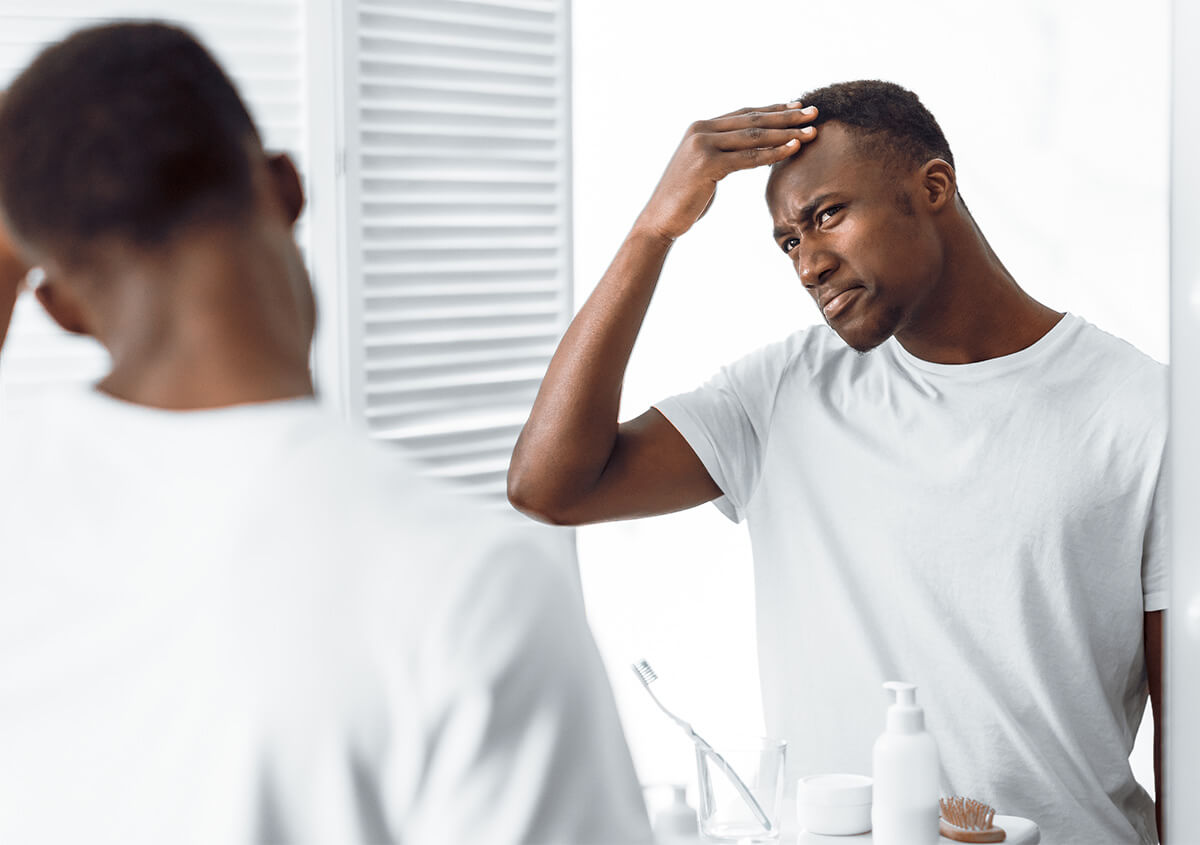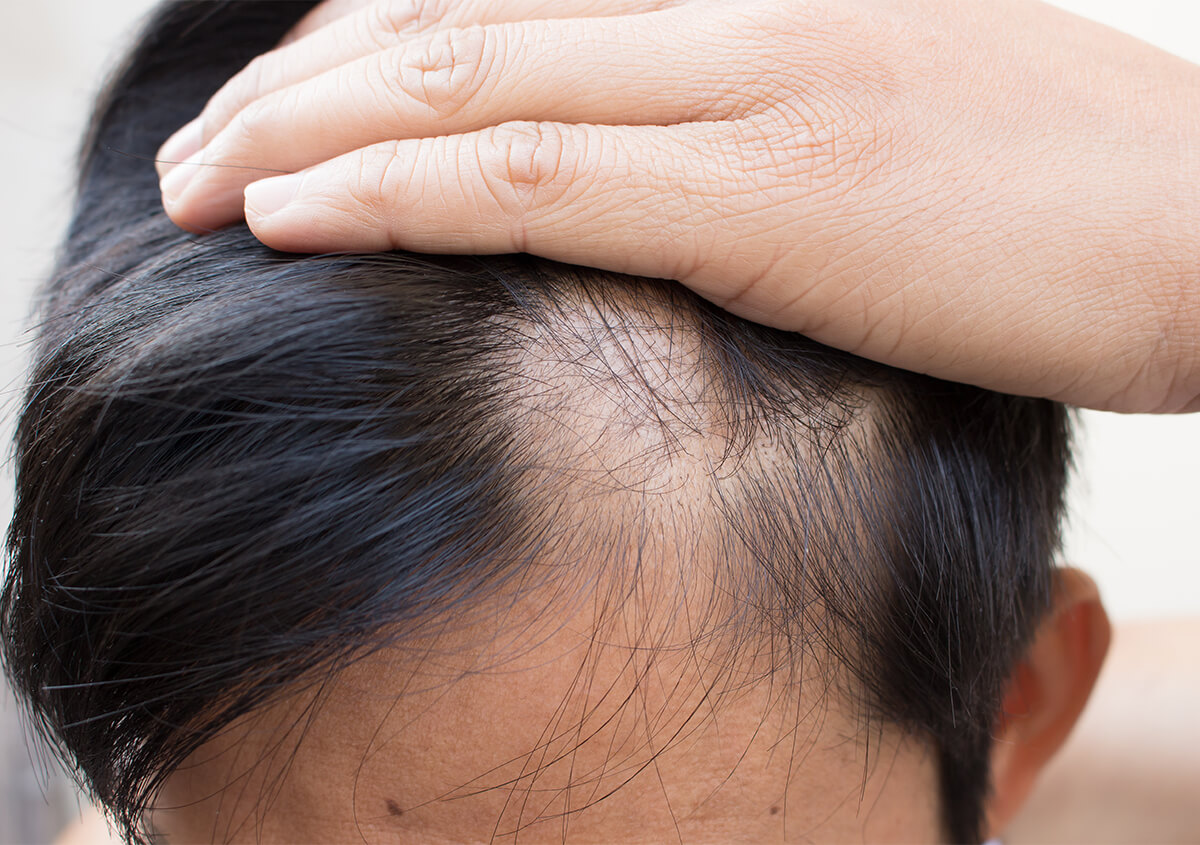Non-surgical treatments to help men and women regrow and preserve hair.
Losing your hair can be deeply distressing. Aside from affecting your appearance, hair loss can make you feel powerless and negatively affect confidence levels and the way you feel about yourself.
If you’re suffering from, or showing early signs of losing your hair, effective treatment options are available.
There are many types of alopecia, also referred to as hair loss or balding, and only board-certified dermatologists are trained in differentiating among them.
A successful hair restoration journey begins with a proper diagnosis of the type of hair loss.
At Mitchell Dermatology we often see patients who have had evaluations and hair treatments only to discover that they were misdiagnosed, or told that nothing could be done about their thinning hair or balding condition. This can be extremely frustrating and very costly.
Hair loss can be scarring or non-scarring. Scarring alopecias, or scarring hair loss, is characterized by inflammation that leads to permanent destruction of the hair follicles. This can
lead to permanent hair loss if not diagnosed and treated early on. Sometimes, even with proper management and treatment hair loss can progress.
Non-scarring alopecia, or non-scarring hair loss, usually does not have any inflammation, and there is no destruction of the hair follicle. We can often determine the type of hair loss based on the examination, but may perform a biopsy for a definitive diagnosis.
Hair loss is typically related to one or more of the following factors:
- Hereditary – In most cases, there is an inheritable condition known as male or female pattern baldness. It usually follows a specific pattern that is predictable and happens as a person ages.
- Hormonal Changes – Many conditions, including stress, can negatively affect hormones and in turn cause temporary or permanent hair loss. For females, pregnancy and menopause are two of the main culprits for hormonal alopecia.
- Medical Conditions – Thyroid conditions and infections can cause increased shedding and baldness.
To properly treat your hair loss condition a comprehensive consultation, including an in-depth medical history, and in many cases blood work, will need to be completed prior to prescribing a personalized plan.
During the consultation Dr. Hope Mitchell will diagnose your type of hair loss to determine if you’re a good candidate for hair restoration treatment; and she may recommend a combination of nutritional supplements, Minoxidil–over the counter–Rogaine with or without prescription creams and/or pills, steroid injections or Platelet Rich Plasma (PRP) injections to help stimulate hair growth and counteract future hair loss.
Hair loss presents in different forms and varies with each individual. Some of the most common symptoms of hair loss include:
- Thinning – Hair thinning is one of the most common symptoms that affect both genders. For men, hair may start to recede on the forehead. Women often will notice a widening of the part, while the hairline stays normal.
- Patchy Bald Spots – In some cases, people may experience smooth bald spots. Most of the time, this occurs only around the scalp area, but it may also happen in eyebrows and beards.
- Loosening of the Hair – Having a physical trauma or an emotional shock can cause someone’s hair to loosen. As you brush, wash, or gently tug on your hair, you might pull out a handful of strands.
Non-surgical hair loss treatments for men and women
There are a number of non-surgical treatments that many men and women find effective and easy to manage which include: medication, nutritional supplements, corticosteroid injections, and PRP (Platelet Rich Plasma) injections.
Platelet Rich Plasma (PRP) is a hair loss treatment that works by injecting platelets from your own blood directly into the scalp. These platelets contain growth factors that stimulate regrowth and thickening of hair follicles.
This procedure is safe and ideal for patients who are experiencing any hair loss from localized thinning in the temples to diffuse or generalized hair loss. If there is no scarring of the hair follicles, patients can see results as early as a few weeks after the treatment. Request an appointment here.
Nutrafol Nutritional Hair Growth Supplements for Men + Women
Nutrafol nutraceutical uses a multitargeted approach to address different root causes of hair loss which may include stress, inflammation, hormone imbalance, environmental stress and nutritional deficiencies.
Award-winning supplements with natural ingredients clinically proven to improve hair growth. 100% drug-free and physician formulated. Shop Nutrafol here.
Mens | Womens | Women’s Balance | Core Formulations contain 21 active ingredients AND:
- Synergen Complex- Saw Palmetto, Ashwagandha, Curcumin, Vitamin E, Marine Collagen
- Women’s Balance- Macca root & Astaxanthin
FAQs
Can you see the results after one session of PRP?
After one session of PRP (Platelet-Rich Plasma) therapy, some individuals may notice initial improvements such as decreased hair shedding or improved skin texture. However, significant and lasting results usually require multiple sessions spaced over several weeks to months.
What is the PRP success rate?
The success rate of PRP therapy varies depending on the individual’s condition being treated, their overall health, and other factors. In general, PRP has shown promising results for hair restoration, skin rejuvenation, and wound healing, with many patients experiencing noticeable improvements. However, discussing potential outcomes and expectations with a dermatologist is essential to determine the suitability and anticipated results for each case.
Which is better, PRP or minoxidil?
Choosing between PRP (Platelet-Rich Plasma) therapy and minoxidil for hair loss depends on factors like the cause of hair loss, treatment goals, and personal preferences. While both promote hair regrowth, minoxidil is a topical medication used at home, while PRP involves in-office procedures with the patient’s own blood. Consulting a dermatologist helps determine the best option for you.


Request a consultation by calling us at 419.871.3737 (Perrysburg) and 419.871.3636 (Fremont).
Request an Appointment

Hope Mitchell, MD, is the founder and medical director of Mitchell Dermatology and an Ohio board-certified medical and cosmetic dermatologist. Dr. Mitchell has 25 years of expertise in the field. She is prepared to meet every skin care need with a personalized, one-of-a-kind treatment plan that you deserve.


